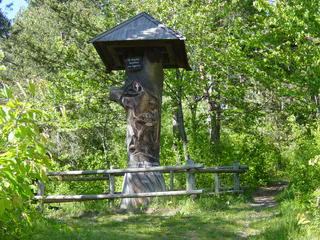
Natural Heritage Chestnut Oberweirach-Hof
Parcines/Partschins, Partschins/Parcines, Meran/Merano and environs
Zamki i pałace, muzea, sztuka, skarby historyczne i współczesne miejsca. Te atrakcje i zabytki są również częścią udanej podróży odkrywczej przez Południowy Tyrol.

Parcines/Partschins, Partschins/Parcines, Meran/Merano and environs

San Cassiano/San Cassiano, Badia, Dolomites Region Alta Badia

1/2
Rasa/Raas, Natz-Schabs/Naz-Sciaves, Brixen/Bressanone and environs

1/3
S.Cristina Gherdëina/S.Cristina Val Gardena/S.Cristina Gherdëina/St.Christina in Gröden, S.Crestina Gherdëina/Santa Cristina Val Gardana, Dolomites Region Val Gardena

S. Costantino/St. Konstantin, Völs am Schlern/Fiè allo Sciliar, Bolzano/Bozen and environs

1/2
San Vigilio, Al Plan/San Vigilio, Dolomites Region Kronplatz/Plan de Corones

1/5
Malles/Mals, Mals/Malles, Vinschgau/Val Venosta

Tramin an der Weinstraße/Termeno sulla Strada del Vino, Alto Adige Wine Road

Laces/Latsch, Latsch/Laces, Vinschgau/Val Venosta

1/7
Corti/Hofern, Kiens/Chienes, Dolomites Region Kronplatz/Plan de Corones

1/2
Laives/Leifers, Bolzano/Bozen and environs

1/6
Rablà/Rabland, Partschins/Parcines, Meran/Merano and environs

1/5
Scena/Schenna, Schenna/Scena, Meran/Merano and environs

1/3
Villabassa/Niederdorf, Niederdorf/Villabassa, Dolomites Region 3 Zinnen

1/5
Santa Caterina/St. Kathrein, Hafling/Avelengo, Meran/Merano and environs

1/5
Burgusio/Burgeis, Mals/Malles, Vinschgau/Val Venosta

1/2
Colfosco/Colfosco, Corvara, Dolomites Region Alta Badia

1/2
Salorno/Salurn, Alto Adige Wine Road

Ora/Auer, Auer/Ora, Alto Adige Wine Road

Bolzano Centro/Bozen Zentrum, Bolzano/Bozen, Bolzano/Bozen and environs

1/5
Rablà/Rabland, Partschins/Parcines, Meran/Merano and environs

1/2
Siusi/Seis, Kastelruth/Castelrotto, Dolomites Region Seiser Alm

Parcines/Partschins, Partschins/Parcines, Meran/Merano and environs

Maranza/Meransen, Mühlbach/Rio di Pusteria, Brixen/Bressanone and environs

Cermes/Tscherms, Tscherms/Cermes, Meran/Merano and environs

1/6
San Giorgio/St. Georgen - Scena/Schenna, Schenna/Scena, Meran/Merano and environs

1/7
Parcines/Partschins, Partschins/Parcines, Meran/Merano and environs

1/6
Bressanone città/Brixen Stadt, Brixen/Bressanone, Brixen/Bressanone and environs

1/5
Lagundo/Algund, Algund/Lagundo, Meran/Merano and environs

1/6
Badia/Badia, Badia, Dolomites Region Kronplatz/Plan de Corones